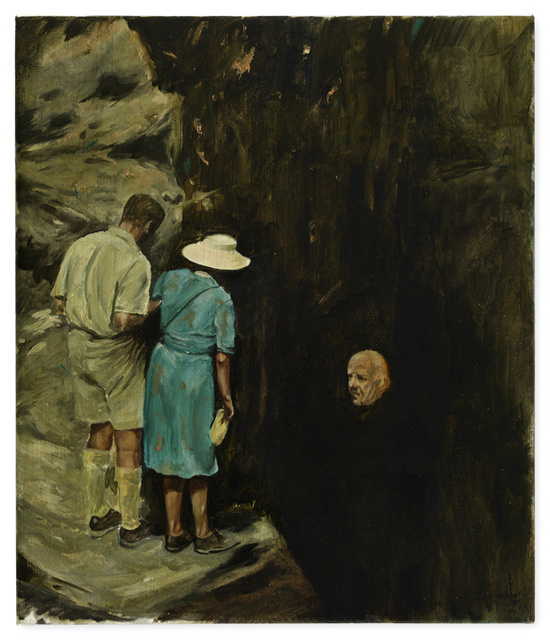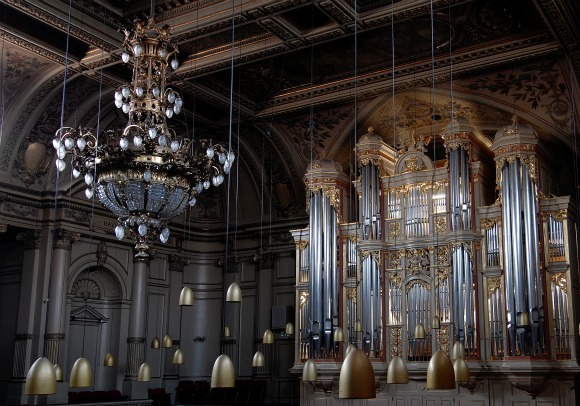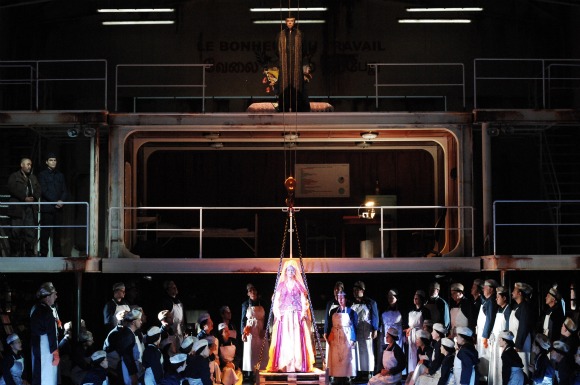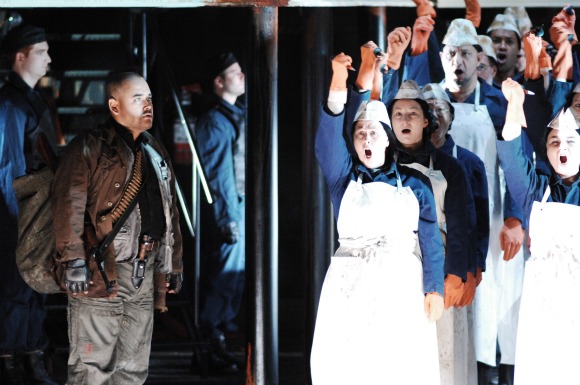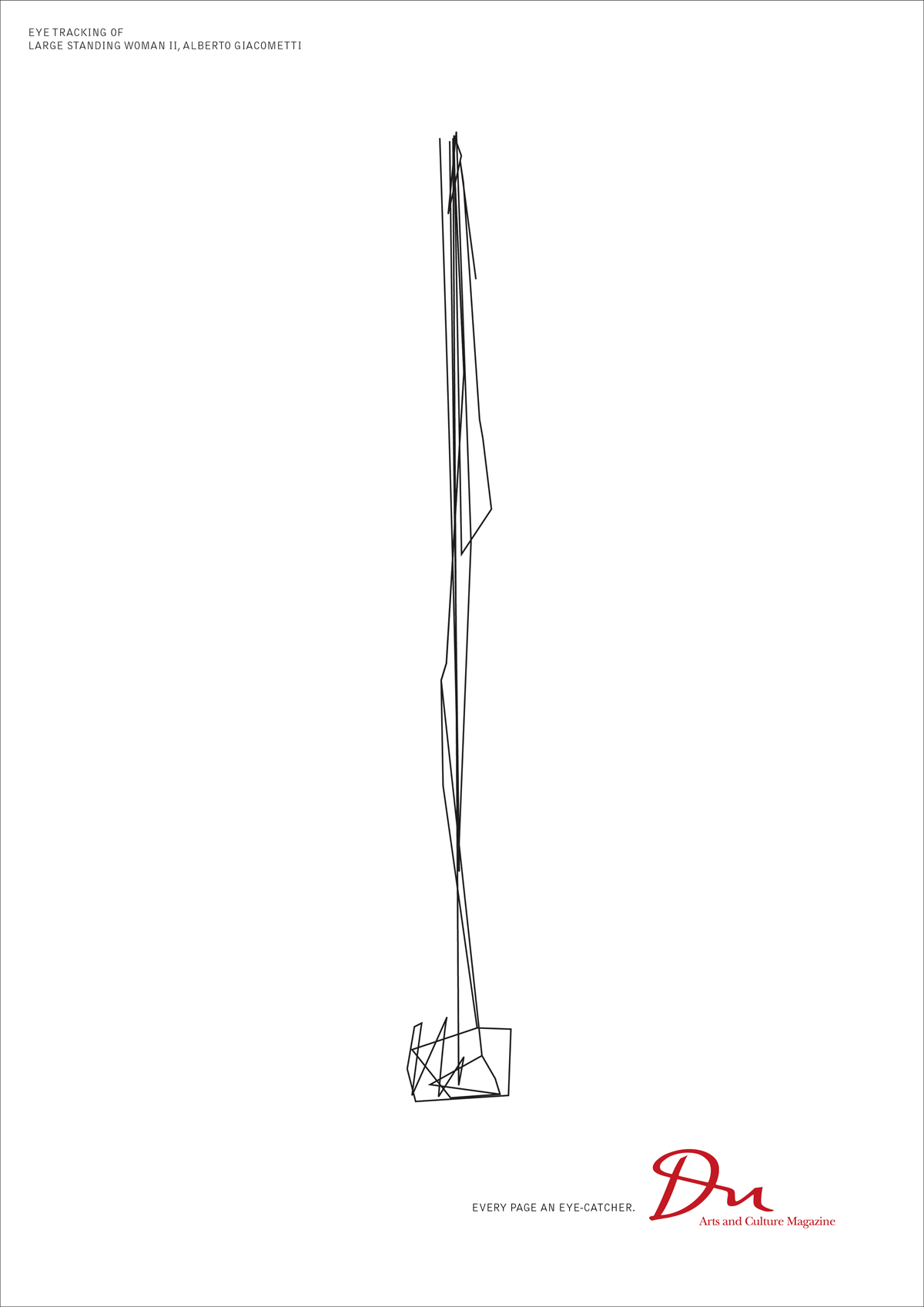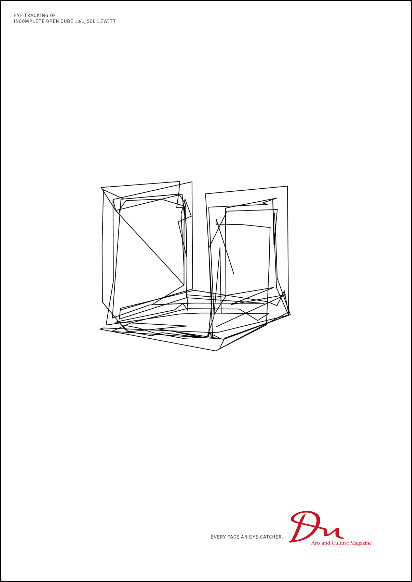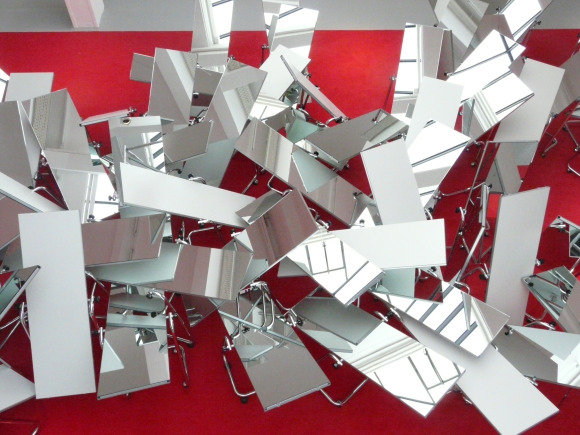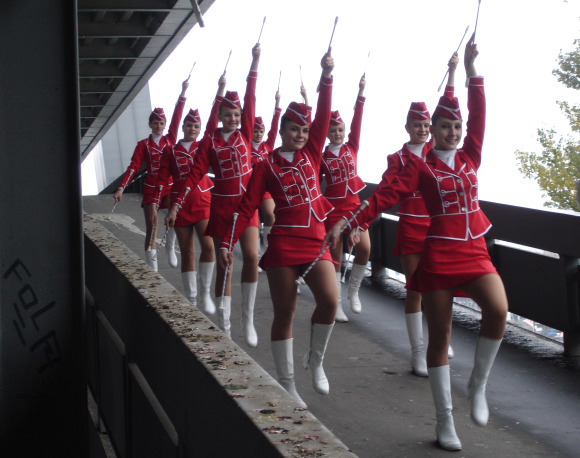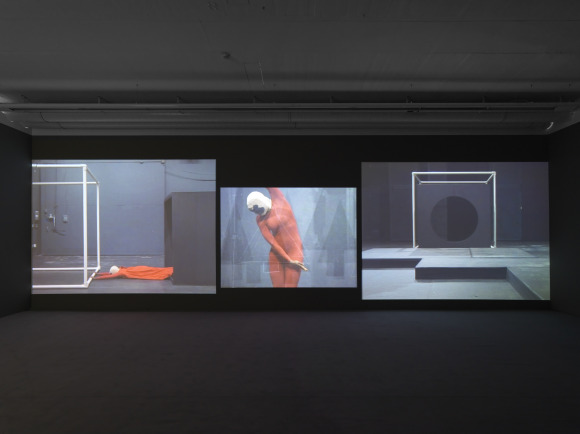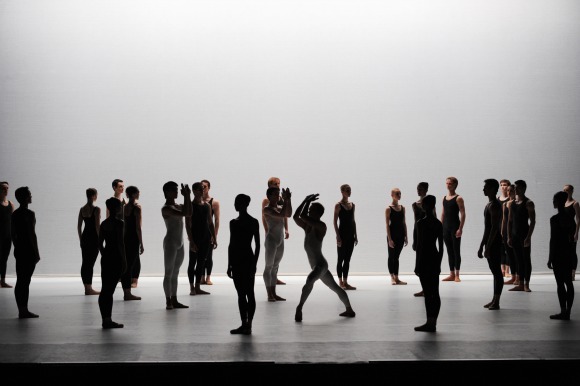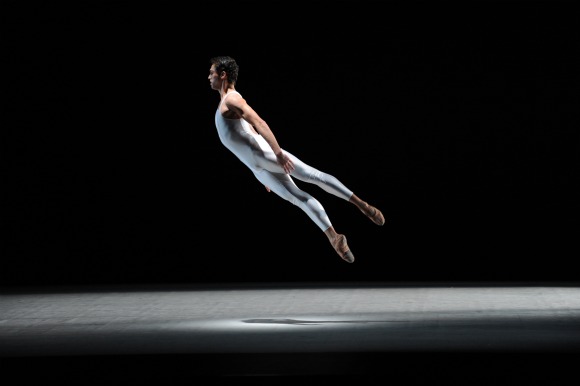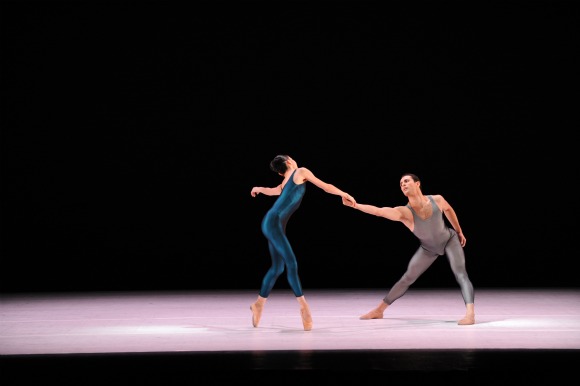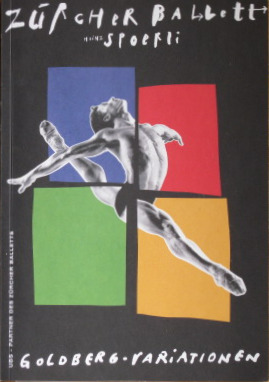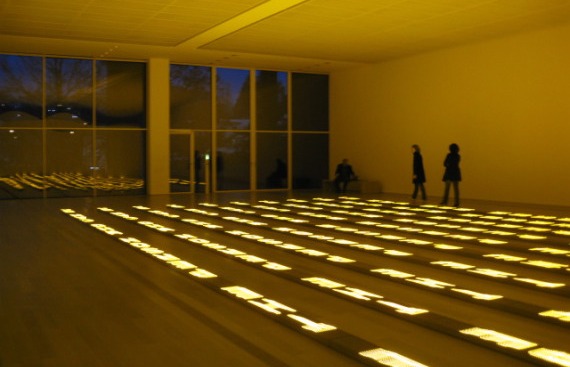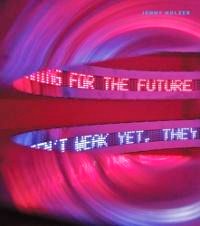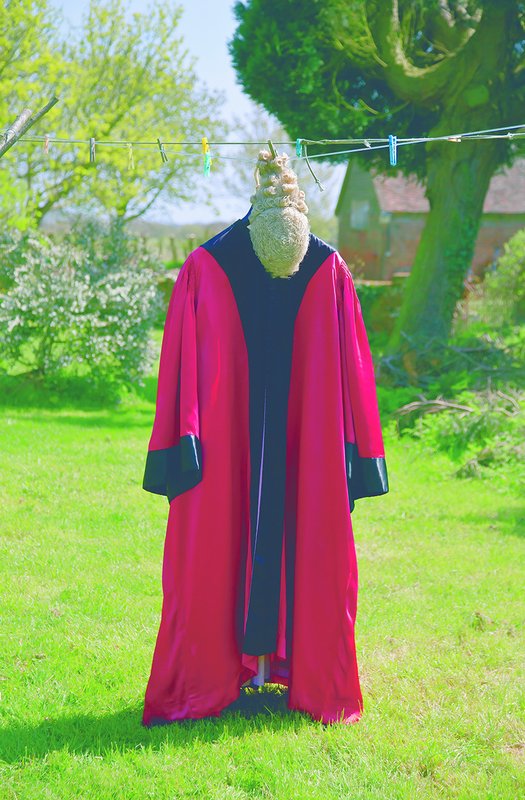
We the People (after Pierre Cavellat), 2013, © Carey Young. C-Print photograph, 190 x 124 cm. Courtesy of the artist and Paula Cooper, New York.
The art scene has started earlier than opera in Zurich in September.
With a sensational show, The Migros Museum für Gegenwartskunst re opened last autumn in the old brewery Löwenbräu- Areal in Zurich west where art, business and residential complex was developed.
Including Kunsthalle Zürich, world famous leading gallery, Hauser & Wirth, Eva Presenhuber and Bob van Orsouw returned here together. Luma Westbau/POOL etc., JRP Ringier a contemporary art publishing company and Freymond-Guth Fine Arts Gallery joined as well. Indeed the art block Löwenbräu White is internationally significant center of modern art in the world.
The invitation for the new season of The Migros Museum für Gegenwartskunst is ‘Legal Fictions’. It is the solo show of Carey Young.
Carey Young living and working in London is a well-known visual artist, using the variety of media mix such as video, photo, performance, installation, etc.
Since approx. 2003, she has focused law-based work addressing the monolithic power of the legal system, taking the experimental form from law as a conceptual and abstract time and space.
‘We the People’ is a large-scale photographic work, featuring a judge’s robe and a wig hanging on a garden washing line.

Uncertain Contract, 2008, Videostill, © Carey Young. Courtesy of the artist and Paula Cooper Gallery, New York.
In the video ‘Uncertain contract’, an actor performs a script composed of functional legal instruments such as commercial contracts.
Authority of power is divided or varied in performance and language; she highlights ambiguity or gap of law system with a sort of her joke and humor.
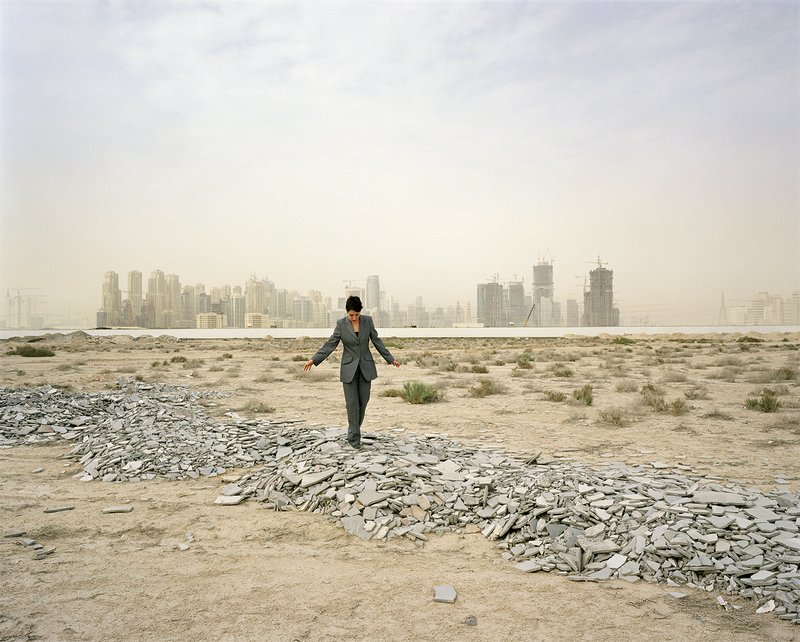
Body Techniques (after A Line in Ireland, Richard Long, 1974), 2007, © Carey Young. Courtesy Paula Cooper Gallery, New York.
‘The Body Techniques’ series is the video that Carey Young herself in business suit shows us her performance on the stage that is bleakly buildings sites in the United Arab Emirates. Her fiction remakes various our daily life scene under controlling of society and law system.
The show includes a number of new commissions that are contextualized by various earlier works. Her exhibitions have already achieved great success in London, Munich, and New York etc. Indeed “Legal Fictions “ at The Migros Museum für Gegenwartskunst is her first big solo show in Switzerland.
Until November 10, 2013
Leave a Reply
Silent One, 2010 Oil on linen 35.7 x 30.5 cm / 14 x 12 in
© Christopher Orr, Hauser & Wirth Zürich,IBID Projects,London
One old beer factory with a lion mark in Löwenbrau-Area, which is the base of Zurich’s modern art, is currently going through a large-scale 2-year development.
Although many prominent galleries around the world used co-existed in this area, such as Migros Museum für Gegenwartskunst, Eva Presenhuber, Hauser & Wirth, Peter Kilchmann and Bob van Orsouw, all these galleries were moved altogether last year. For the time being, Hubertus Exhibitions in Kreis 9 area will be the location for activities.
If it were in Tokyo, it would be like going to the bay area. It was getting dark and I was heading towards the direction where you may see fewer people. As I was not farmilier with that area, I took a wrong tram, but somehow I managed to get there, with a little help from a friend over the cell phone.
It was the opening party of Migros Museum that night. Since the party had started earlier, some people were already coming out. At the entrance of the building, people who looked like art students got together, enjoying smoking in the cold air.
Up on the staircase, I saw Migros Museum für Gegenwartskunst on the right, and 2 galleries on the left.
Bob van Orsouw was introducing the latest works of Nobuyoshi Araki. As might be expected, they had a good collection. Next to that was Hauser & Wirth, which really demonstrated the luxury of the top-notch art world.
While it has been the custom that you could look at other galleries on the opening night of one gallery, with this building, the floor gave the impression of a united floor when each gallery left its door open, which I found very interesting.
I saw an enigmatic picture.
From the entrance, some peculiar light was inviting me, like saying, “Come over here.”
The author was Scottish Christopher Orr. A picture which I felt like I have met somewhere long time ago. However, it was a false illusion, and once you stepped into this odd world of this contemporary artist, by tracking back the genealogy of surreal or fantasy paintings, I soon realized that the origin of his images had to go back another century.
Orr was a German scenary painter, and it has been said that he was very much affected by British Joseph Mallord William Turner or by the romantic expression by another German scenary painter, Caspar David Friedrich, who shared the same epoch.
Whether it was ruins or rainstorm, it was a scene of something crumbling. Appreciating its peculiar uneasy beauty of romanticism, and traveling back and forth between fiction and constructivism, this artist worked his way by erasing the borderline of reality and fantasy.
While it suggested as well as symbolized something, the abstractiveness of Orr was just like a trip back and forth between the energy of fetal movement like magma burning deep inside the earth and illusion, which still continued to the story of the present and the future.
The texture created by painting in so many layers and figures. Or scraping the paint off by knife in order to have a mysterious shape suddenly appear at the bottom of the canvas.
Most of these 13 new works exhibited here were rather small, F0 or F3. Those small things were inducing words here and there out of the tranquil wall, and the meanings that the pictures represented were crossing from every angle of the world.
At 9:00 pm in the venue, sceneries of fiction that were neither uneasy another world or this world, were placed side by side, and the lyricism of light and darkness was set free.
http://www.hauserwirth.com/
Leave a Reply
©Josef Stuecker
One very chilly evening, we were driving along the lake. Since we were once told that the basement parking of the Park Hyatt was convenient, I have been using this parking lot whenever we come here.
Opera House stands on the right side of the Lake Zurich, and on the left side, there is another historical building that can be the hub of the Zurich culture. It is Zurich Tonhalle (a music hall.)
While the Opera House was built in the current location in 1891, this music hall was built 4 years later. The hall situated inside the Congress House has very elegant and wonderful interior decorations such as ceiling paintings and columns, while boasting its acoustics as of the world’s top level. The small hall where mini concerts of solo or chamber music are held, also gives breathtaking sophisticated elegance and beauty.
The “Tonhalle-Orchester Zürich,” establishing this hall as their main music hall, may be well known for classical music fans for their many CDs. Especially in the recent years, increasing number of fans are found in various countries because of their great success as the world’s top orchestra. Founded in 1868, it is a distinguished European orchestra with a long history.
Orchestras that played a major role in the musical culture were non-existent, in the German-speaking part of Switzerland where vigorous religious transformations took place.
Although it was lost in fire later, the Zurich Opera House was built in 1834, at a different location from the current one. The need for an orchestra to play for the opera became obvious, and a small orchestra was formed.
It was about 160 years ago. Wilhelm Richard Wagner exiled himsealf to Switzerland, and stated to live in the mansion of Otto Wiesendonck who was a successful silk trader. The masion is now Museum of Rietberg.
Wagner, who made his name one after another by conducting major music pieces including his own, at the Opera House, held concerts very often. In response to this influence, a plan to found an orchestra gained momentum among the intellectuals in Zurich.
Before long, the Tonhalle-Orchester Zürich was born as the oldest Swiss orchestra, having the Zurich Opera House orchestra as the mother orchestra.
The first conductor was Friedrih Heger. Since Heger was an ardent admirer of Brahms, Johonnes Brahms, who stayed in Zurich often, was also a frequent guest conductor.
In 1895, following Brahms, Heger took a baton, and the Tonhalle Zürich (a music hall) was finally opened.
While the principal conductors for Tonhalle have been mainly German, from Hans Rosbaud, Rudolf Kempe, to Christoph Eschenbach who was appointed in 1982, Hiroshi Wakasugi from Japan served as the principal conductor for 4 years after that.
©Priska Ketterer
In 1995, David Zinmen, who was born in New York, was appointed as the principal conductor. Since then, the well-known “Tonhalle-Orchester Zürich” has been proactively involved in overseas concerts as a leading European orchestra, changing the history boldly at the same time. It has created many opportunities to foster young conductors as well.
Furthermore, not only the concerts in the hall, but also their energetic idea for recording have accelerated their fame as the world’s Tonhalle.
They have produced CDs for Richard Strauss, Robert Schumann, and complete symphonies of Beethoven. They have realized a huge amount of CD recordings, and created a new environment to listen to the Tonhalle-Orchester Zürich. The richness of its performance surprises the critics and fans around the world.
Zinmen himself also is very active around the world as a guest conductor. 100 musicians that he leads and excellent and exciting guest conductors perform roughly more than 50 programs, making about 100 performances per year.
The New Year Concert this year was conducted by Muhai Tang from China. He is a well kown and a very popular conductor of the Tonhalle.
The first half was composed of 3 pieces; early springy joyful prelude of “Die Fledermaus” of Strauss, 2 pieces of Mozart, and one piece from “Il Barbiere di Siviglia” which was a big hit last year at the Opera House. For the latter half, following the elegant prelude of “La Scala di Srta” by Rossini, the aria from Chaikovski’s opera “Eugen Onegin” was performed by a Finnish giant, Matti Salminen.
Muhai Tang who was energetic, even showing the wild streak, and Salminen displayed some relaxed easiness. Then especially the thrill of excitement by the nostalgic mezzo-soprano sung by Mariana Carnovali from Buenos Aires in South America, was so sexy that you would feel that you heart was just squeezed tight. She was as young as 23, and her bronze skin was beautiful.
The people with a bit flushed cheeks with excitement were descending the gentle spiral stairs, smiling.
I heard that Salminen was making an appearance to the table where the CDs were displayed.
If you seek for it, you will have a chance to meet such an outrageous talent in such close proximity. I am blessed to be able to listen to such music in Zurich.

Leave a Reply
When you go to see an opera, and especially when you have booked a nice seat, you try to have a good sleep the night before, as much as possible.
In a small space with a seating capacity of 1100, such as Zurich Opera House, the distance towards the stage is not that far. Unless your seat is close to the ceiling, as the acoustics of this opera house is very good, you need proper physical strength as well to receive the impact of real elite human being performers.
However, I also enjoy the footwork of dropping in the opera house by reserving a seat online if still available, when I am feeling good and have enough time. Unless it is premiere or a premium seat, I believe wearing an outfit that is not so fancy is acceptable to your neighbors. As far as you feel comfortable, that’s all matters. In such a manner, by keeping your shoulders relaxed, you can enjoy just like the time warp into the extraordinary world of opera.
A good friend of mine from Japan came here. She was well versed in plays and Kabuki. One of her goals of this trip was, of course, to see an opera. Luckily I found out that “Les pêcheurs de perles (The Peal Fishers)” by Bize would be showing when she came.
Having won the “Roma Prize” which was the gateway to success for French artists, Bize returned to Paris from Italy. This work was written when he was 25 years old. Soon after the premier of “Carmen” that was performed in about 10 years after his return, he died of illness at the young age of 36. Having established an important position in the opera world and his great talent that could have changed the history was suddenly gone. There is no doubt that if any opera piece had been created after “Carmen,” how wonderful the opera world would have been.
Although he was not prolific, probably due to his low number of pieces known in opera, the size and the composition of “Pearl Fishers” is quite often compared with those of “Carmen.”
It is said that “The Peal Fishers” has been transformed quite dramatically after Beze’s death, and this piece is still continuously developing with changing details by many unique directions.
Although Carlo Rizzi, the conductor, defines that “Carmen” is a more sensual and exciting dynamic opera with full of life, he says;
“When Bize wrote the ‘Pearl Fisher,’ he was not really debuted yet in that era. He was young, and because of his youth, I believe, this piece has a sense of purity or transparency. The story is very simple and easy to understand. Anyway, the melody of each piece of music is clear and very beautiful.”
It was the latter part of the 19th century France. While the popularity of Italian opera was still dominant, it was an epoch when a “French opera” was born, which gave a new trend to the world of opera.
I wonder such a historical backdrop has affected the story.
The director was Daniel Herzog, who was known for his strong dramatic impression. He captured with a little storng social nature.
Although the scenic art or the lightings of Zurich Opera House quite often incorporate some devices that surprise the audience, no complicated structures were found this time, probably due to the easy-to-understand story.
The scene was a beach in ancient Ceylon.
The stage did not move much. It was structured in 3 layers from the very beginning.
According to the previously mentioned , “First of all, look at the very bottom. Here you see the peal fishers all lined up, and this is the sympol of laborers. The middle is the middle-class, and the very top layer with a run-down monastery is the top of the system of the ‘Pearl Fishers’ world.”
Also in order to clarify such a structure, the pearl fishers remained on the stage.
Tens of pearl fishers stayed there all the time, by moving their hands wearing orange color gloves all together, which dragged weirdness of the power of a mass.
Baritone Franco Pomponi played Zurga, the newly chosen head of the pearl fishers, while Nadir, his childhood friend, who once had loved the same womanand had conflict with him, was performed by tenor Javier Camarena.
The priestess Leila, once was a lover of Nadir but sent here to the beach to pray for the safety of the pearl fishers, was performed by soprano Malin Hartelius.
Bass Pavel Daniluk played Nourabad, the Brahman high priest who brought Leila.
The priestess Leila was asked by Zurga never to remove the veil and to remain virgin, only to pray for the safety of the pearl fishers.
However, by listening to Leila’s voice, Nadir realized “That’s her,” and both of them recognized each other.
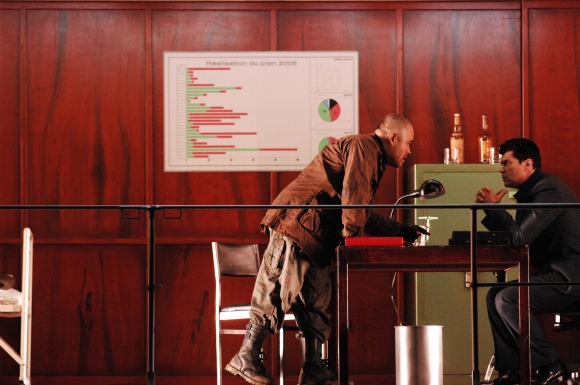
Famous pieces of music were sung one after another: arias, duets and terzettos.
Reunion with an old friend, then the duet “fond du temple saint (From the depth of the holy temple)” sung by Camarena and Franco Pomponi, praising their friendship since there would be no lover who had brought conflict between them, was truly beautiful.
The most well known piece is, of course, “Je crois entendre encore” which Nadir sang thinking of Leila. While Camarena is one of the most popular singers in Zirich Opera House, when the first phrase of this song started to give a little bit lonely tune, I felt so romantic that I was wrapped in the softness as if someone was taking me to somewhere. Although he was from Mexico, he had some oriental feeling and sang his love for Leila, expressing the liberty of a young man who had been away from the village for a long time.
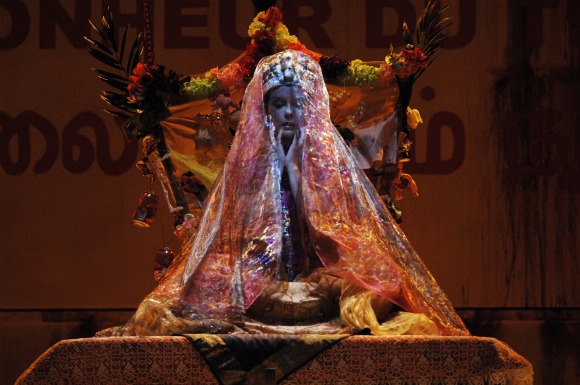
The soprano of the priestess Leila was almost divine-like. Nobleness was incorporated into the transparency of the melodies that Carlo Rizzi, the conductor, repeatedly emphasized.
Especially, the aria “Dans le ciel sansa voiles” was wonderful, following “, divin Brahma!”, that resounded from the top of the stage by Leila with her veil on, at the last scene of Act I.
The fact that Leila and Nadir were in love again was revealed to Nourabad by the guards, and they were condemned to death.
Leila begged Zurga to spear Nadir. When Zurga realized that the priestess was actually Leila, Zorga told her about his love, but could not change Leila’s feelings. Out of jealousy, Zurga condemned them for execution.
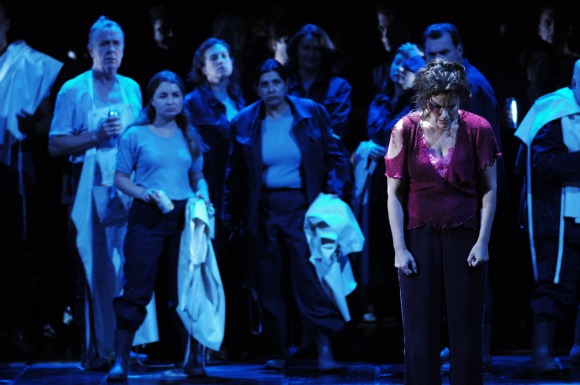
Leila said, “If I am to be killed, please take this to my mother,” revealing her pearl necklace. That was the give he left with the girl who rescued him by risking her life when he was on the run.
Zurga lit the fire in the village, and he decided to let them go during the villagers were in chaos. The song sung before this scene, another famous terzetto, “O lumiere sainte” was sung by these three characters, and their voices rolledin and out like waves, filling the opera house with the dramatic mithgy ocean.
At the end, the villagers killed Zurga. Nadir and Leila disappeared into the light. The story ended that the authority was brought down by the people, and despite the hesitation in religion, love shone at the very end. As the story was easy to understand, I was able to enjoy beautiful and rich singing voices comfortably, without fiercely following the subtitles.
That night, the melodies of the arias were echoing deep in my ears throughout the night.
Photo: © Suzanne Schwiertz
003
http://www.opernhaus.ch/
Leave a Reply
If there are people who can recall the name of the artist by looking at these drawings, they must be experts of fine art, I wonder.
Du is a Swiss magazine of art and culture, issued and sold in the German-speaking Switzerland.
They always commission top-class photographers, and the magazine is like a good example of Swiss designs, featuring graphic designs in a very cool manner.
A sense of distance brings us comfort, and it is sophisticated as well as beautiful, as one can declare as “EVERY PAGE AN EYE-CATHER.”
Beyond these 3 drawings, you can foresee 3D spaces. It is fascinating that they make us imagine such images.
EYE TRACKING Series Advertisements
Jeff Koons HANGING HEART
Alberto Giacometti LARGE STANDING WOMAN Ⅱ
Sol Lewitt INCOMPLETE OPEN CUBE 10/1
The current July/August issue features the Motreux Jazz Festival that started from the 2nd of July.
・・・・・・・・・・・・・・・・・・・・・・・・・・・・・・・・・・・・・・・・・・・・・・・・・・・・・・・・・・・・・・・・・・・・・・・・・・・・・
Advertising Agency: Euro RSCG Zürich, Switzerland
Executive Creative Director: Frank Bodin
Creative Director: Axel Eckstein
Copywriter: Ivan Madeo
Art Director: Christina Wellnhofer
Graphic Designer: Sarah Kahn
808jpg
http://www.du-magazin.com/
Leave a Reply
William Forsythe The Defenders Part 2 2008 Mirrors, carpet Ca. 1700 x 800 cm /Photo Julian Gabriel Richter
It was 1916 when Tristan Tzara declared Dadaism in Zurich. While this town has been influenced by major events in art history later on, it has been established as one of the important bases of the world’s contemporary art.
One museum that plays the role of leader among them is Migros Museum of Contemporary Art (Migros Museum für Gegenwartskunst.)
As a matter of fact, there are surprisingly only a few museums that specialize in contemporary art in Europe, but Migros Museum of Contemporary Art is well known as an existence that always collects and exhibits unique and high-quality artworks along with Le Palais de Tokyo in Paris and Whitechapel Art Gallery in London, in the world’s art scene.
The museum opened in 1996. Around this time, from the mid 1990s up to the present time, there has been a tendency that lot of artists gathered together in this town from all over the world.
Migros Museum of Contemporary Art is located inside the building that was remodeled exactly like a former old Swiss brewery with the familiar brand mark of a lion. Other world renowned galleries of contemporary art also co-exist in this space, such as Eva Presenhuber, Hauser & Wirth, Peter Kilchmann, Bob van Orsouw, as well as Kunsthalle Zürich. Migros Museum of Contemporary Art sometimes developes activities collaborating with these galleries.
There are many galleries and quite a few creators focus on their creative works in this neighborhood called Löwenbrau-Area, and it is an area in Zurich where top-notch information is sent out. Migros Museum of Contemporary Art facilitates great environments for the art students in this area so that they can continue their creative activities in Zurich after graduation. Simultaneously, the museum intends to keep on creating the art history of contemporary art by close relationship with the artists around the world through a process of interaction among people.
The museum is under the patronage of the largest Swiss retailer, Migros. It incorporates various industries under its umbrella such as supermarkets, department stores, schools and so on. Although the eventful and really challenging life of the founder, Gottlieb Duttweiler, is well known, it is worth noting genealogically that he himself collected avant-garde paintings.
Anetta Mona Chisa and Lucia Tkácová Manifesto of Futurist Woman (Let’s Conclude) 2008 Single-channel videoprojection (color, sound) 11:13 min.
At the moment, Migros Museum of Contemporary Art is holding a truly powerful exhibtion, as if the whole 20th century philosophy and ideas were restructured.
This group exhibition, “While bodies get mirrored- An Exhibition about Movement, Formalism and Space” brings 13 world’s renowned contemporary artists displaying totally different developments and various movements of contents, through the threads of symbolic vocabulary, such as dance, sculpture, video and installation.
One focus of the exhibition is the influence of (post) modern dance and choreography in contemporary art. Another central theme is the re-presentation of the performative, and the notation of movement and dancerly activities through the most varied media.
Early post modern dance and its postulation that “every movement is part of a dance and every person is a dancer” can be read on the one hand as an historical bridging moment to modernism, but also, on the other, as a moment that links the exhibited positions in this exhibition. In post modern dance, the legacy of formalist expression of movement has been applied and further developed, in a reaction to contemporary visual arts. In the last few years there has been an increased interest by younger artists in resuming and rediscovering this avant-garde movement of the early 20th century – the formal-aesthetic as well as the social perspective.
Kelly Nipper Shifting Shapes (3, 6, 9, 12) 2010 3-Kanal-Videoprojektion (Farbe, Ton) 10:1 min. , Loop/FBM Studio, Zürich © the artist
I heard the interview with the curator, Raphael Gygax.
“The title ‘While bodies get mirrored’ may present complexities at a glance, but first of all, this is very poetic and reflects the three moments that we wanted to pursue: formalism, movement and space. The work requires certain space that mirrors or reflects them. To reflect them in modern art quite often has a close relationship with the segmentation of human body.”
Director, Heike Munder, has been successfully shown challenging events one after another since her appointment in 2001.
“We have presented performative activities over the years. They are movements and theatrical forms of expressions. We have collected all those elements into this space as a group exhibition this time.”
At the very back of the site, you will see “The Defenders Part2” by William Forsythe, where over 70 mirrors were wedged into one another like piles on a bright red carpet. Although through totally different manners, the language associated with this artwork corresponds, from work to work in the whole exhibition, to the “Get Mirroed” concept.
4jpg
Martin Soto Climent The Swan Swoons in the Still of the Swirl 2010 Single-channel-videoprojection (color, sound), blinds, aluminum Dimensions variable/ Photo A.Burger,Zurich
Once you step in the venue, you will be welcomed by the work “The Swan Swoons in the Still of Swirl” by Mexican artist Mrtin Soto Climent, which has picked up the DNA of Forsythe and can be considered the implicaton of it. Steel sculpture and the author who makes it dance appear on the screen.
By following this conductor wire, you will reach the dance by May Deran, an American avant-garde pioneer who reminds us of animism.
9fcff25167
Maya Deren A Study in Choreography for Camera 1945 Single-channel video projection (16mm film transferred to DVD, b/w, no sound) 3 min. Loop
Further ahead, there is a film by Delia Gonzalez, which extracts his imtimate female image based on the passage of the work by Henry Mirror. Wearing black wings of Oberon, the King of the Fairies from Shakespere’s Midsummer Nights Dream, a dancer who looks like appeared from the deep darkness, dances in a magical manner.
817edaee87-580×463
Delia Gonzalez In Remembrance… 2010 Single-channel video projection (16mm film transferred to DVD, color, sound) 12:50 min.
Let’s hear more of what Heike Munder says.
“The spirituality in the modern times lives between re-formalism and fantasy. The two important movements mean that while form is against geometry, they always overlap at the same time. Utopia is lost, but many artists interact with Utopia. They retrieve it by their strong artistic power.”
Alphabet Letters by Paulina Olowska
3jpg
Paulina Olowska Pioneer Alphabet Letters 2005 Box with 26 cards, colored, 4 cards, b/w je 21 x 15 cm/ Photo A.Burger,Zurich
While expanding the sculptural field, Julian Goethe tries to solidify the movement further by putting up an extensive rope.
9jpg
Julian Goethe: Kontakt, 2005, MDF wood, lightnings, Ca. 250 x 400 x 20 cm, © the artist, Photo A. Burger,Zurich
10jpg1
Julian Goethe Extended Version 2010 Rope, metal Grösse variabel/ Photo A.Burger,Zurich
Anna Molska tries socio-political approaches.
14jpg
Anna Molska: Tanagram, 2006 – 2007, Single-channel video (b/w, sound), 5:10 min, © the artist
“You will understand that the origin of their art is holding hands with the idea of Utopia.”
132jpg-1
Hanna Schwarz Give 2010 Single-channel video on monitor (16mm film transferred to DVD, color, sound) 5:30 min.
“In the early 20th century, cultural anthropologists, psychologists and sociologists assumed that the imprints by body or movements were given by spiritual culture. This exhibition, I believe, is one ideal way of expressing such influence and legacy.”
A couple years ago, I had a chance to interview Heike Munder. She explained their “on going art prosess” which was the strategy and also the mission of this museium, as follows:
“Art is always connected with the society. It links to the world and it is open toward outside. Therefore, it can be said that art links to politics, economics and history as well. Ask the audience and the society about art. People think, feel and get excited. Or feel happy. That reflects on the museum, and we ask again. This repetition will continue permanently.”
62jpg
Mai-Thu Perret Winter of Discontent or the Ballad of a Russian Doll 2003 Wood, light bulb, corrugated steel, paint 40 x 407 x 250 cm/ Photo A.Burger,Zurich
“Imagine that the movement of the museum is laying down roots under the ground. Soon or later, it will become a tree. Then it may bloom. Or a wide forest might be born. Isn’t it wonderful? That is my understanding of “on going art prosess.”
“While bodies get mirrored” is glowing with its root under the ground of “on going art prosess,” and it can be interpreted as the comprehensive group exhibition at present.
I felt strange happiness that I myself felt the reflection in the Utopia presented in this exhibition.
…………………………………………………………………………………………………….
Artists comprising “While bodies get mirrored”
Anetta Mona Chisa 1975, Romania; Maya Deren  1917 – 1961 Ukraine; William Forsythe 1949 USA; JulianGoethe 1966 Germany; Delia Gonzalez 1972 USA; Babette Mangolte 1941 France Anna Molska 1983 Poland; Kelly Nipper 1971 USA style; Paulina Olowska 1976 Poland; Silke Otto-Knapp 1970 Germany; Mai-Thu Perret 1976 Switzerland; Hanna Schwarz 1975 Germany; Martin Soto Climent 1977 Mexico; Lucia Tkácová 1977 Slovakia
Until May 30, 2010
http://www.migrosmuseum.ch/
Leave a Reply
While opera is, of course, famous when you talk about Zurich Opera House, the stage performances by the Zurich Ballet, which belongs to the House, is said to be “the most beautiful ballet in Europe” as a matter of fact.
As wonderful opera singers gather together in this small town, so do the ballet dancers. Selected elitests of the elite dancers in the world come together to this town, and perform like twinkling stars on the stage.
Heinz Spoerli, who is well known as a choreographer, used to be a dancer himself. He was appointed as the Artistic Director of Zurich Ballet in 1996, and since then he has been continuously creating innovative and unique productions.
Dancing the “Goldberg-Variationen” of Bach in all.
While this piece is best known for the performance by Glenn Gould, when 2 arias and 30 variations including the repeats are played, the performance will easily exceed 1 hour. The dances and short intervals of movements between dances make the performance of about 90 minutes. The pianist who continued to play throughout the performance without intermission was Alexy Botvinov. He was born in Odessa in Ukraine, and since he won the Rachmaninow-Competiton in Moscow when he ws 19, he has established his world reputation by winning the International Bach-Competitions and Schumann-Competition
If it is a solo concert like this time, all the more, and even if it is a ballet performance, lot of people come, being anxious to listen to his performance. Since playing Schumann for the ballet performance of “Szenen” in the mid-90’s, Odessa has been a good partner of Spoerli, creating excellent harmonies.
All the dancers of Zurich Ballet boast the level of elite performance and all capable of performing as soloists.
The expression of feelings by Yen Han, who receives overwhelming fan support, is delicate, deep and beautiful. His brathtaking perfect proportion brings such an enchanting elegance. Aliya Tanykpayeva is transferred from the Imperial Russian Ballet, while Sarah-Jane Brodbeck demonstrates cheerful, free and cute atmosphere.
Male dancers include Artur Babajanyan, Bryan Chan, Arman Grigoryan and so on. Each is the best and the brightest with the capabilities of super elevation, breathtaking motionlessness as well as talented agility.
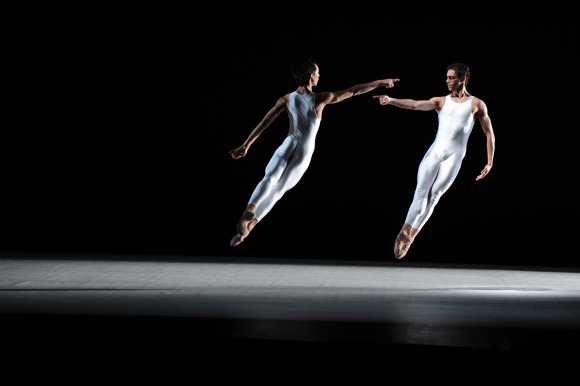
When the first aria started, many shadows started to move slowly. On the very dimly lit stage, each dancer seemed like to have become each sound, transmitting its own musical note.
No stage props. Simply Alexy Botvinov and one piano in the orchestra pit. Lighting, movements of the dancers, and the leotards that changed colors one after another. Instead of addition, deduction was the key here. Shaved off as much as possible, this piece of work seemed to bring about the inner face of each who was involved in this stage. Lights and shadows crossed each other.
Spoerli says, “For me, Goldberg-Variationen is my passing life itself.” Men and women meet, become enchanted each other and unite, and sometimes separation occurs. As you age, you become mature and change. As such, men and women get together then part from each other, as the time goes by.
The dancers, who danced through 30 variations of life, were sometimes elegant, lonely and sophisticated, and other times, they demonstrated such unpredictable surprising “dance” as if we were watching acrobatic gymnastics. Meticulously calculated varieties of exciting scenes appeared and disappeared in front of our eyes. Although there were soloests in the halfway, “pas de deux” was performed in the latter 3 pieces. They were so sophisticaated and flexible, just like dances in a dream.
The Goldberg-Variationen is “prelude” of the 16th variation, with comparison in the first half and the latter half. Spoerli choriographed it “as if forming into an arch.” In the scene when the first aria was repeated and it ended slowly, tranquility was brought back on the stage.
It was a long piece of music that even had an anecdote that it was performed due to insomnia. I was worried that I might fall a sleep, but was alert all throughout the performance by lots of surprises. Contrary to its highly evaluated production for many years, I heard “It’s just a performance with lots of changing colors of leotards and lights and lots of dancers come and go to dance. That’s all” by the regulars of Opera House. It was interesting to hear.
Omission that showed such enormous piece in a simple way just like that. It was assurance and sublimation of the basics of the classic. It reminded me that something like a cosmic view created by this ballet company has made Zurich Ballet very unusual.
Photo: Opernhaus Zürich / Peter Schnetz
http://www.opernhaus.ch
Leave a Reply
At the site of Jenny Holzer Exhibition at Fondation Beyel, somehow taking pictures is allowed, possibly a part of the intentional planning.Much talked about collaboration with the architecture by Renzo Piano. Other artists include Giacometti. Picasso, Max Ernst, and Andy Warhall who, for some period in his career, enjoyed outdoor advertising such as neon as his media for his expression. These are selected by Holzer herself, as a curator, from the collection of the Foundation. Here you may enjoy dialogues with these works of art.
http://www.beyeler.com
y1
Leave a Reply
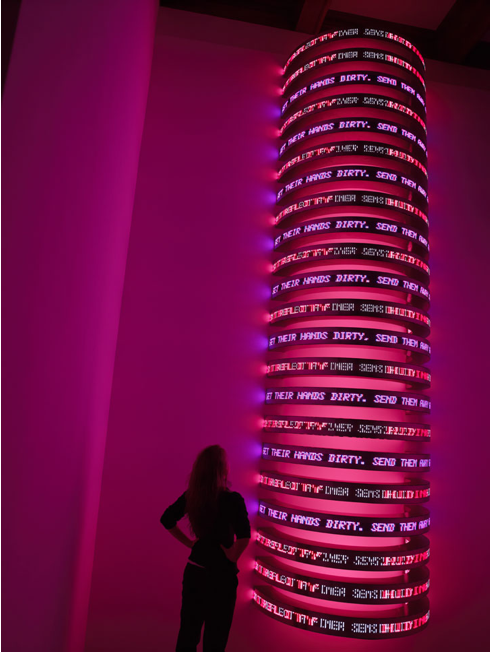
It is just less than 1-hour ride from Zurich to Basel by nonstop tain. While Basel is well known for its fairs of art or watches, it is an old city developed as the center for arts and science as well as culture, since the Medieval Ages. Sophisticated elegance is found in the Old Town or along the Rhein. The national train station of Basel is a station at the border with a neo-baroque façade. Germany, France and Switzerland all join its borders here.
We took the tram from the station to Riehn in the suburb. Although you can find many beautiful art museums in the world, at this Fondation Beyeler, situated by a big pond with abundant water, the tranquility and elegance welcome the minds of visitors who come here to appreciate art.
Work by the world’s well-known architect, Renzo Piano
Not to mention that Beyeler has wonderful and carefully selected collections, it is known as a museum that hold very high-quality exhibitions in Europe. At the site of the Basel Art Fair every year, this is the art museum where you always find on your right from the entrance, as the very first booth.
Jenny Holzer Exhibition is being held over the New Year. While there is no need to refresh your memory, she is one of the most prominent contemporary artists today. She won the Golden Lion award in the Venice Biennale in 1990, and since this recognition, she has developed her creative activities which conveys, like abundant waves, her words of strong social and political but still poetic nature into a wider field.
She was born in Ohio, USA in 1950. Her recent projects have often involved cties around the world, being used as medea, such as sending phrases on electric LED bulletin boards. The exhibition this time in Zurich demonstrated her work on the wall on the hill of Lindenh that looked down the Limmat River in the Old Town. In Basel, her messages were kept running through the cathedral, inside the SBB station, City Hall, or on stone pavements and on the bronze Virgin Mary in the church.
g_FB_holzer-jpg
© 2009 Jenny Holzer, member Artists Rights Society (ARS), New York Photo: Serge Hasenböhler
The exhibition consists of the texts in the late ‘70s and major works in all the fields she has been involved since the late ‘80s. Especially, it focuses on her recent works including those that have not yet been published in Europe. It is a large-scale show for the first time in Switzerland, introducing paintings, objects as well as LED installations.
Furthermore, this is for the special and flexible courtesy of Beyeler that they have selected, from their collections, the works of A. Giacometti. P. Picasso, K. Malevich, and F. Bacon, so that the viewers can also encounter totally different types of art, in terms of interaction with the works of Holzer, while they move from one installation to another or at the same time of viewing the works of Holzer.
The exhibition will be open until January 24, 2010.
http://www.beyeler.com/
Leave a Reply
007-a
Geographically speaking, it is in the south-southeast of the Lake Zurich. This side is called Silver Coast, contrast to the Gold Coast of the other side of the lake. Because the sun shines by grazing the mountains, shadows are darker. The light is somewhat dreary, and the streets of buildings with beautiful neo-classical carvings are full of stories. Although there must be a lot of stories to tell, the streets seem to trap us into puzzles to be solved whenever we walk on the streets.
Getting off the tram and walk to the left. After passing the iron-gate on the slope, and on the top of a small hill, you will see an elegant villa build by Otto Wesendonck, a successful silk trader in the mid 19th century. This mansion is the old wing of Museum Rietberg. The building right in front of that is the new wing and most of you who are involved in architecture may be familiar with this building since it has held world-class competitions.
The collections of Museum Rietberg include Oriental, African, American and Oceanic arts, and this is very unusual for an European museum.
However, that is the part where you find the Swiss folklore art, and I realized for the first time at this exhibition of Performing Masks Swiss Carnival, which displays carnival masks, that the museum has an enormous permanent collection of Swiss masks.
image2_640_480
Carnival mask, Tschäggäta Switzerland, Lötschen valley, early 20th century
It was the time when I was wondering where the mountain people are now. One day by chance on TV, I saw the people who were walking through the field of snow, by wearing huge masks that were hard to tell whether they were those of animals or humans.
I was told it was a traditional local festival called Tschäggätä in the Valais region, to get rid of evil spirits. It is held on the Thursday before the Ash Wednesday in February. It is very interesting because the way it looks and the custom to wake up children by visiting houses are similar to the Japanese Namahage.
Although there are various stories as to the masks, it is said that the masks used for this occasion is the oldest ones in Switzerland. Because their facial expressions are too fantastic, super-human and mystic, it had already attracted the attention of ethnologists by the end of the 19th century.
image1_640_480
Museum Rietberg Zurich Carnival mask Carver: Albert Anton Willi (1872-1954) Switzerland, Domat/Ems
Furthermore, the masks in the Salganz region where Rumantsch, one of the Swiss 4 languages, is the official language, have the characteristics of rich expressions which extend vertically and horizontally. When I was going through the exhibition catalogue, I found one photo where Mr. Albert Anton Willi, who was a sculptor in this region, was putting an expression of a mask on his face in front of a mirror.
007-p
Many of the masks displayed this time are made by curving woods and coloring, by using animal skins, sheep -skin and textiles and so on. While there are 3 major regions where the masks are handed down through generations, it is overwhelming to see the enormous variety of expressions. I wonder this tells us that individualism were accelerated more in the days when the nature was severe and the people had to live in the environment where communications were cut off due to the rugged mountains.
In this country surrounded by the mountains, religions before Christianity was brought in, or faith before religion, have been affected in various ways by the surrounding countries. In some regions, they have integrated with Catholicism and re-grown as individual cultures.
Awe and respect for huge mountains. I hear that the roots of many mythologies and legends can often be found in the regional festivals.
From the Alpine mountains or deep in the forests, in the room deep in the museum, the sprits are conspicuous.
http://www.stadt-zuerich.ch/kultur/en/index/institutionen/museum_rietberg.html
